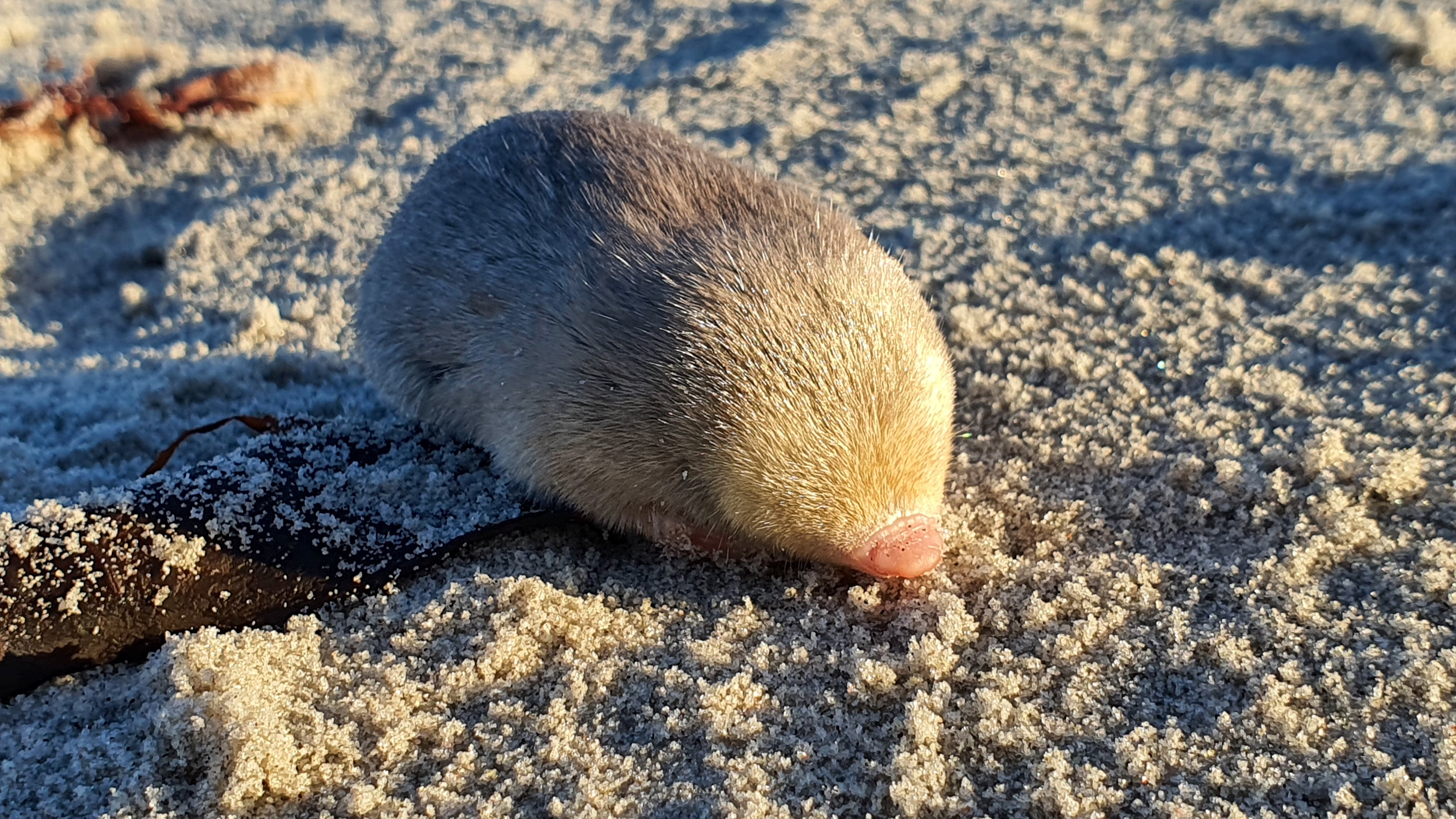Shimmering golden mole thought extinct photographed and filmed over 80 years after last sighting
De Winton's golden mole, last sighted in 1937, has been found alive swimming through sand dunes in South Africa after an extensive search for the elusive species.
A golden mole that has not been seen for over 80 years has been rediscovered in sand dunes in South Africa. The blind animal was filmed and photographed after an extensive search for the species, which researchers feared was extinct.
De Winton's golden mole (Cryptochloris wintoni) is an elusive blind mole that "swims" through sand, lives in inaccessible burrows and has a shimmering, iridescent coat. It has only ever been recorded in one location — Port Nolloth, on South Africa's northwest coast — where it was last sighted in 1937.
The researchers searched for evidence of the elusive mole by taking more than 100 soil samples from a range of locations and analyzing them for environmental DNA (eDNA) — DNA traces of the animal left in its environment through excretions, skin cells and hair. The team's findings were published Nov. 24 in the journal Biodiversity and Conservation.
Related: Giant 1.5-foot-long rat that can crack open coconuts photographed for 1st time on remote island
"We were fairly confident that if De Winton's golden mole was in the environment, we would be able to detect it by finding and sequencing its DNA," lead author Samantha Mynhardt, a conservation geneticist with the Endangered Wildlife Trust (EWT) and Stellenbosch University in South Africa, said in a statement.
At Port Nolloth, the team found fresh golden mole burrows and tracks that had been revealed by recent heavy rains.
They used a trained sniffer dog to identify the scent of two common species of golden mole — cape golden mole (Chrysochloris asiatica) and Grant's golden mole (Eremitalpa granti). The dog didn't respond to the Port Nolloth field signs, which suggested the tracks hadn't been made by one of the common species, raising hopes they were evidence of De Winton's golden mole.
Get the world’s most fascinating discoveries delivered straight to your inbox.
Analysis of eDNA from all the samples revealed two common golden mole species and the endangered Van Zyl's golden mole (Cryptochloris zyli). A species closely related to Van Zyl's golden mole was also identified — and while researchers thought this could be the lost De Winton's golden mole, they were unable to prove it.
However, in 2022, a DNA sample from a De Winton's golden mole specimen that is now housed at a museum in Cape Town became available for study. After comparing the gene sequence from this to their eDNA samples, the researchers confirmed the fourth species was from De Winton's golden mole.
Four more populations of De Winton’s golden mole have since been found.
"Though many people doubted that De Winton's golden mole was still out there, I had good faith that the species had not yet gone extinct," Cobus Theron, senior conservation manager for EWT and a member of the search team, said in the statement. "I was convinced it would just take the right detection method, the proper timing, and a team passionate about finding it," he added.
"Now not only have we solved the riddle, but we have tapped into this eDNA frontier where there is a huge amount of opportunity not only for moles, but for other lost or imperiled species."
The De Winton's golden mole is listed in the Search for Lost Species project, which was launched in 2017. Created by Re:wild in conjunction with other conservation organizations, the aim of the project is to search for and rediscover 25 animal, plant and fungi species that have been lost to science for at least 10 years but are not yet classified as extinct by the IUCN Red List of Threatened Species.
So far, 11 of the lost species have been found, including the Attenborough's long-beaked echidna (Zaglossus attenboroughi), Wallace’s giant bee (Megachile pluto) — the largest bee on the planet — and the velvet pitcher plant (Nepenthes mollis), which had been lost for over 100 years.

Megan Shersby is a naturalist, wildlife writer and content creator. After graduating from Aberystwyth University with a BSc (Hons) degree in Animal Science, she has worked in nature communications and the conservation sector for a variety of organisations and charities, including BBC Wildlife magazine, the National Trust, two of the Wildlife Trusts and the Field Studies Council. She has bylines in the Seasons anthologies published by the Wildlife Trusts, Into The Red published by the BTO, and has written for the BBC Countryfile magazine and website, and produced podcast episodes for its award-winning podcast, The Plodcast.




